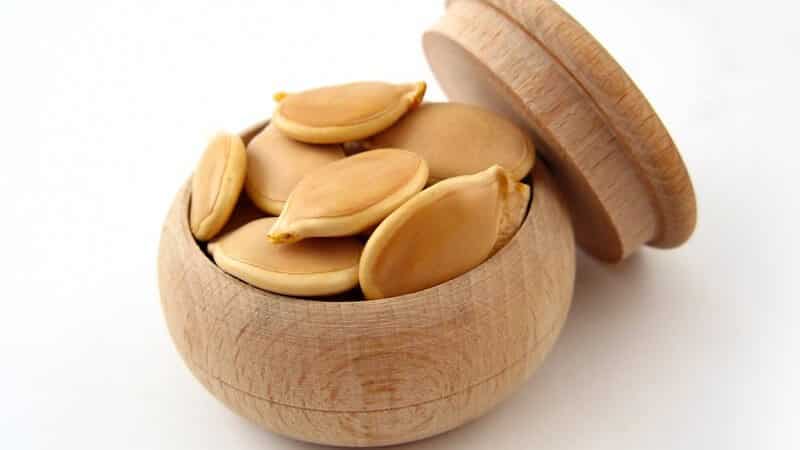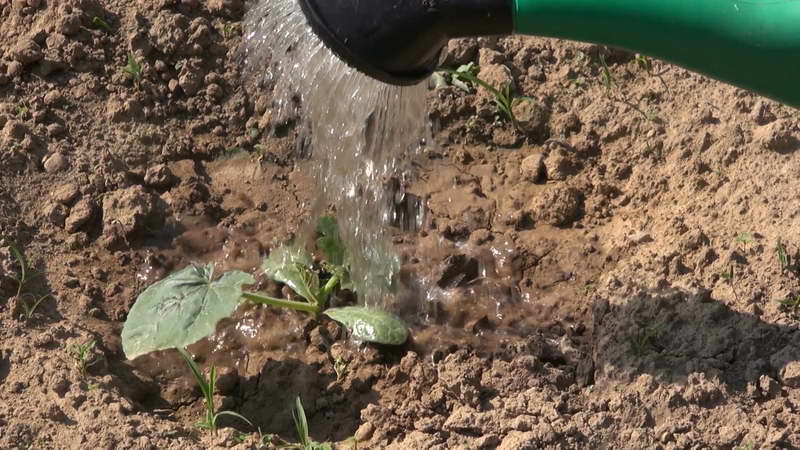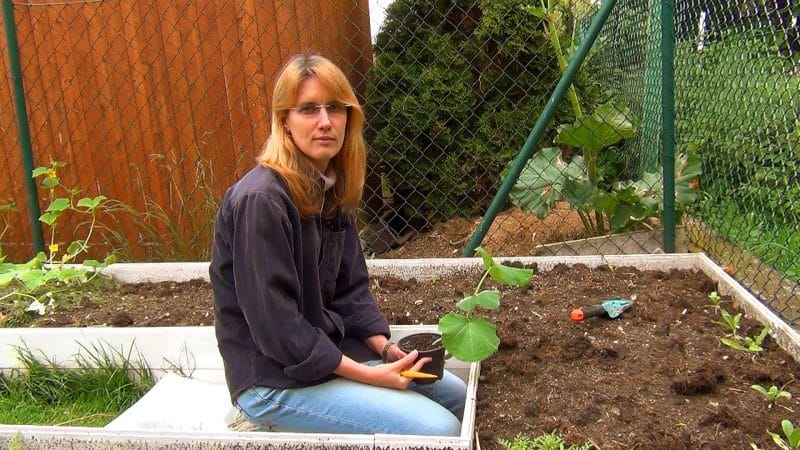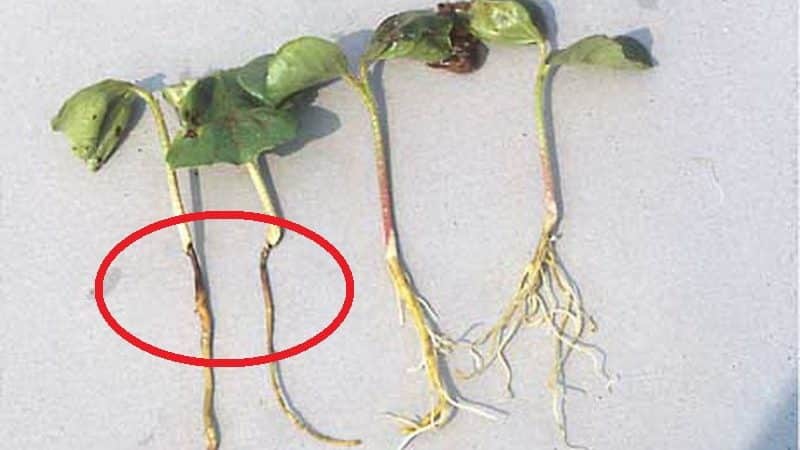How to calculate the time when to plant pumpkin seedlings?
Pumpkin is an unpretentious crop that grows well in different climatic conditions. The vegetable has a rich composition and pleasant taste. This makes the orange beauty an indispensable assistant for those who care about their health and watch their figure. It is not surprising that the vegetable is often found on gardeners' plots.
Pumpkin bushes love warmth and sunlight. In temperate climates, the crop is grown mainly by seedlings. In this article we will talk about the nuances of planting pumpkin seedlings at home and proper cultivation in open ground.
Preparing Pumpkin Seeds
Growing a crop begins with a careful examination and selection of seed material. They are collected independently in advance or bought in specialized stores.
For seedlings, choose large, dense seeds without damage and signs of illness. Selected specimens are placed in a saline solution, mixed and left for about 10 minutes. The floating seeds are empty and will not germinate. The grains that have settled to the bottom are collected, washed with clean water and dried at room temperature.
An important stage in seed preparation is their disinfection.. It protects future tender sprouts from fungal and bacterial diseases, the causative agents of which are hidden in the seeds and soil themselves.

Important! Disinfection is not carried out if the package with planting material indicates that disinfection has already been carried out, or if the seeds are coated.
Disinfect grains in a 1% solution of potassium permanganate (1 mg per 1 liter of water) for 30 minutes.Then they are washed with clean water and dried.
The drug “Fitosporin” is well suited for disinfection. It is effective against fungal and bacterial diseases on any crops. Processing is carried out in accordance with the instructions.
The next stage of preparation is germination, which accelerates the appearance of sprouts. The disinfected material is wrapped in a damp cloth (for example, gauze or cotton pads), placed in a plastic bag and stored in a warm place. At temperatures from +22 to +27 °C, seedlings hatch in 2–4 days. In addition to ordinary water, growth stimulants (Epin or Zircon) are used.
Some people germinate pumpkin seeds in sawdust. To do this, pour them into a suitable container, pour boiling water over them and cover with a lid. After the mass has cooled to room temperature, planting material is added to the mixture and deepened slightly. The container is wrapped in a plastic bag and placed in a warm, dark place for 2-3 days until sprouts appear.
Experienced gardeners, in addition to soaking, also harden the seed material. The procedure increases the resistance of plants to cold and temperature changes. This is especially important for heat-loving crop varieties (for example, butternut squash).
Attention! Seedlings grown from hardened seeds are less sensitive to temperature changes.
The material is hardened in the refrigerator for 3–5 days. Sprouted seeds in the same damp cloth or in sawdust are placed on the bottom shelf of the refrigerator.
Hatched and hardened seeds are planted in prepared and moistened soil to a depth of 2-3 cm. In regions with a warm climate, pumpkin is sown directly in open ground: in barrels with compost or in beds. In the Urals and in Siberia, the vegetable is mainly grown through seedlings.
Planting containers and soil
Individual containers are selected, since the leaves and stems of young plants are delicate and are easily damaged during transportation and replanting.
In addition, the crop does not tolerate picking, so special peat pots are perfect for it. You can also use disposable plastic cups or other convenient containers. The diameter of each should be at least 8–10 cm, depth - about 15 cm.
Important! Pumpkin seedlings do not like transplanting. Therefore, for growing seeds, choose a container in which the plants will develop comfortably for 3-4 weeks.
Like any vegetable crop, pumpkin loves nutritious soil. Heavy soil with a predominant clay content is not suitable. They prepare the soil themselves or use special soil mixtures for pumpkin crops (cucumbers, zucchini, squash, melons, watermelons).

At home, the soil is prepared from peat, humus and sand. They are mixed in a ratio of 2:1:1. Sea sand is not used, since salt is destructive to the root system of plants. Sand is sometimes replaced with rotted sawdust. In this case, the ingredients are mixed in equal parts. Prepared planting containers are filled 2/3 with soil mixture.
Advice. When filling containers, leave a small supply of soil. It will be useful in the future for adding elongated stems.
Dates for sowing seedlings in the Urals, Siberia and the Leningrad region
When and how to properly plant pumpkins in open ground in different regions of the country? To obtain strong and healthy plants, it is first of all important to correctly calculate the timing of planting seeds. A crop planted too early will stretch out and it will be difficult to transplant it into open ground without damage.Late planting is also impractical - the seedlings adapt less well.
Germination of the material begins 3 weeks before stable warm weather develops. Pumpkin does not tolerate cold and frost, so plants are not planted in open ground until the average daily temperature reaches +13...+14 °C.
Important! Overgrown seedlings, which are more than 1 month old, take root worse than younger ones.
In the Leningrad region, suitable weather usually occurs in the last days of May. In the Urals and Siberia - in the first half of June. Accordingly, prepared seeds are planted in late April to mid-May. After 3-4 weeks, the stronger plants will be ready to be transplanted into a garden bed or into a barrel filled with compost.
Caring for pumpkin seedlings
Properly prepared plants at the time of planting have several true leaves of a rich green color and a strong, upright trunk. To grow a crop, you need to properly care for it: provide sufficient lighting, apply fertilizing and follow the watering regime.
Photophilous pumpkin: lack of sunlight weakens the plant, the stems of which become elongated and the leaves turn yellow. Therefore, containers with sprouts are placed on the south side of the house. If this is not possible, then install phytolamps.
Grown bushes are placed at a sufficient distance from each other so that there are no shaded plants.
Watering

Pumpkin seedlings are watered regularly, but moderately. It is important not to allow the soil to dry out before sprouts appear, otherwise the crops will die.
Excess moisture is just as detrimental to seedlings as its lack. Excessive watering is dangerous due to stretching and thinning of the stems. Stagnation of water leads to rotting of seeds and the development of fungal diseases.
Water the plants in the morning with warm, settled water. This allows you to avoid overcooling the roots of a heat-loving crop. A week before the planned planting in open ground, watering is stopped, and 1-2 days later the soil is moistened abundantly and fertilizers are applied.
Important! Short, strong stems with a small distance between the internodes indicate proper care. The bushes are ready to be transplanted to a permanent location when the shoots have formed 3-4 true leaves.
Top dressing
A week after the emergence of seedlings, the seedlings are fed for the first time. Nitrogen fertilizers are applied first. Experienced gardeners recommend fertilizing tender pumpkin plants with a weak infusion of liquid mullein. It is diluted with water in a ratio of 1:10 and watered at the rate of 0.1-0.2 liters per sprout. A 1.5% aqueous solution of nitrophoska (1 cup per 20 cm) is well suited as a top dressing.2 land).
The second time, fertilizers are applied a couple of days before planting the bushes in open ground. This time they feed with nitrophoska or any complex mineral fertilizer. The dosage for each plant is increased by 1.5 times.
When applying fertilizers, it is important to strictly observe the amount so as not to overfeed the sprouts. Excess nutrients lead to the opposite result - the crop stops growing.
Temperature
The correct temperature regime for pumpkin plantings allows you to avoid problems with the crop.
Until the shoots appear, the containers are covered with film and left in a warm place at a daytime temperature of +20...+25 °C. At night the air can be 5–7 °C cooler.
After the sprouts appear (on average after 3-4 days), the daytime temperature is reduced to +15...+17 °C, and the night temperature to +12...+13 °C. If this is not done, the sprouts will stretch out, and it will no longer be possible to correct the situation.After a week, the pumpkin begins to develop real leaves. During this period, the temperature is again raised to +18...+22 °C during the day and to +13...+15 °C at night.
Read also:
How to store pumpkin correctly: different methods and secrets.
How to prepare pumpkin juice using a juicer for the winter.
We are setting yield records by growing the “Hundred Pound” pumpkin variety on our plot.
Possible problems during cultivation
In the process of growing pumpkin seedlings, gardeners often encounter problems that can lead to crop loss. What difficulties await the sprouts of culture?

Seeds do not germinate or germinate poorly
The reason lies in the seeds themselves (for example, they have expired) or in improper care (from excess moisture, the grains rot and do not germinate). The only way out is to take into account the mistakes and sow again.
The seedlings are stretched
Stretching and thinning of plants is perhaps the most common problem that occurs after sprouting. A small stretch can be easily corrected. To do this, the remaining free space in the pots is covered with earth. The culture puts out additional lateral roots and stops excess growth. Such seedlings will be stronger due to the developed root system.
Another reason for stretching is lack of sunlight. Therefore, plants are provided with artificial lighting.
Even very elongated seedlings can be saved. To do this, carefully grab the stem at the base, roll it into a ring and cover it with soil on top. As a result, lateral roots are formed and the vegetable grows stronger.
Seedlings die
Overmoistening of the soil in containers with seedlings leads to the development of fungal diseases and mold. One of these diseases is blackleg. The disease can completely destroy a crop.It manifests itself in the form of blackening and rotting of the root collar (see photo).

The source of infection is hidden in the soil or seed. In addition, the development of blackleg is promoted by thickened sowing, excessive soil moisture, insufficient ventilation, and sudden changes in temperature and humidity.
The disease develops rapidly at high temperatures and insufficient ventilation of the room. This is especially true if the seedlings are grown in a greenhouse.
Selecting disease-resistant varieties and disinfecting the soil will help prevent the problem. For disinfection, the soil is calcined in the oven or frozen for 2-3 months.
Conclusion
Growing pumpkin seedlings at home allows you to speed up the ripening of the crop by 2-3 weeks. To obtain a strong and healthy crop, seed material is correctly prepared, planting dates are calculated and the subtleties of caring for the sprouts are observed.
It is important to transplant vegetables to a permanent place in a timely manner, since overgrown plants are easily damaged and they take root less well.
Dear Agronomist-expert, are you sure that a 1% solution of potassium permanganate is 1 mg per 1 liter of water?